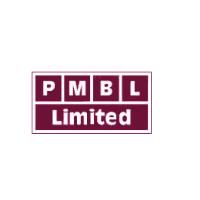 Add My Company
Add My Company
Sign In

Alkaline or Alkaline Manganese Dioxide cells, have many advantages over zinc-carbon cells including
◾higher energy output
◾longer shelf life,
◾better leakage resistance, and
◾superior low temperature performance.
In comparison to the zinc-carbon cell, the alkaline cell delivers up to ten times the ampere-hour capacity at high and continuous drain conditions, with its performance at low temperatures also being superior to other conventional aqueous electrolyte primary cells. Its more effective, secure seal provides excellent resistance to leakage and corrosion.
The most popular primary batteries are alkalines. Based on manganese dioxide, zinc and a caustic potassium hydroxide-zinc oxide electrolyte, alkaline-cell technology offers greater capacity for a given cell size compared with Leclanche types, but they cost more and weigh about 25 percent more.
There have been major improvements in alkaline cell performance over the decades. These improvements have been a result of changes in packaging and manufacturing techniques rather than any improvements to the basic chemical system.
In the past, alkaline batteries were made with complex sealing systems and thick steel outer cases and end caps. During the 1980s, a method was developed that allowed manufacturers to use thinner packaging materials and more efficient seals. More room was created for active materials within a given standard cell size, and that increased capacity.
In the early 90s, government mandate ruled out the use of mercury in alkaline cells providing a major challenge to manufacturers. Mercury, an environmental pollutant, was used in alkaline batteries as an anti-passivation stabilizer for the zinc electrode. Without mercury, chemical processes within the battery cause the zinc to function less efficiently as discharge proceeds because of passivation of zinc surface, thus limiting useful battery life. Manufacturers, such as Energizer and Duracell rose to the challenge and we now have mercury free cells that function as well as their predecessors.
They provide excellent performance at a price premium for applications such as toys, radios, and flashlights. Brand name recognition, i.e. Energizer and Duracell, make this chemistry an excellent choice when product image is important.
Features
Cell Voltage: 1.5V (nominal) 0.8 (cut-off)
Capacity: 34 mAh to 15,000 mAh
Energy by Weight: 75 Wh/lb. (163 Wh/kg)
Energy by Volume: 6.5 Wh/cubic inch (398 Wh/litre)
Shelf Life: 5 years to 80% capacity (20° C)
Temperature Range: -20° C to 55° C
Sizes: AAAA, AAA, AA, C, D and 9 volt
Weight: 12grams to 135grams
Applications
Cameras, Electric Shavers, Electronic Calculators, Electronic Door Locks, Fire Detectors, Flashlights, Pagers, Strobes, Tape Recorders, Toys, and other cordless products.
For more information on Alkaline Batteries talk to PMBL Ltd (Batteries)
Enquire Now
More related to Alkaline Batteries
List your company on FindTheNeedle.

